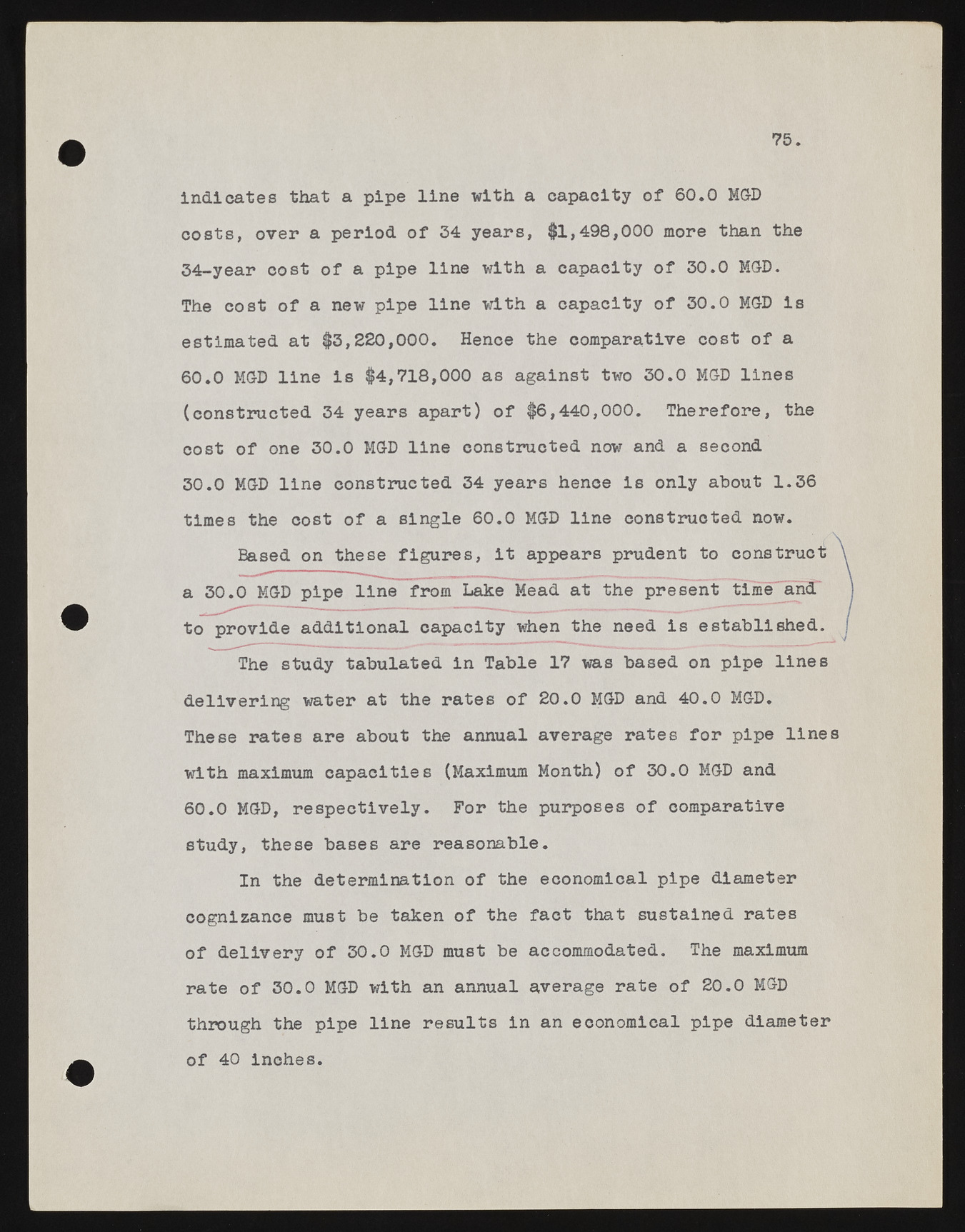Copyright & Fair-use Agreement
UNLV Special Collections provides copies of materials to facilitate private study, scholarship, or research. Material not in the public domain may be used according to fair use of copyrighted materials as defined by copyright law. Please cite us.
Please note that UNLV may not own the copyright to these materials and cannot provide permission to publish or distribute materials when UNLV is not the copyright holder. The user is solely responsible for determining the copyright status of materials and obtaining permission to use material from the copyright holder and for determining whether any permissions relating to any other rights are necessary for the intended use, and for obtaining all required permissions beyond that allowed by fair use.
Read more about our reproduction and use policy.
I agree.Information
Digital ID
Permalink
Details
More Info
Rights
Digital Provenance
Publisher
Transcription
75. indicates that a pipe line with a capacity of 60.0 MOD costs, over a period of 34 years, $1,498,000 more than the 34-year cost of a pipe line with a capacity of 30.0 MOD. The cost of a new pipe line with a capacity of 30.0 MOD is estimated at $3,220,000. Hence the comparative cost of a 60.0 MGD line is $4,718,000 as against two 30.0 MOD lines (constructed 34 years apart) of $6,440,000. Therefore, the cost of one 30.0 MOD line constructed now and a second 30.0 MOD line constructed 34 years hence is only about 1.36 times the cost of a single 60.0 MOD line constructed now. Based on these figures, it appears prudent to construct a 30.0 MGD pipe line from Lake Mead at the present time and to provide additional capacity when the need is established. The study tabulated in Table 17 was based on pipe lines delivering water at the rates of 20.0 MOD and 40.0 MOD. These rates are about the annual average rates for pipe line with maximum capacities (Maximum Month) of 30.0 MOD and 60.0 MOD, respectively. For the purposes of comparative study, these bases are reasonable. In the determination of the economical pipe diameter cognizance must be taken of the fact that sustained rates of delivery of 30.0 MOD must be accommodated. The maximum rate of 30.0 MOD with an annual average rate of 20.0 MOD through the pipe line results in an economical pipe diameter of 40 inches.

